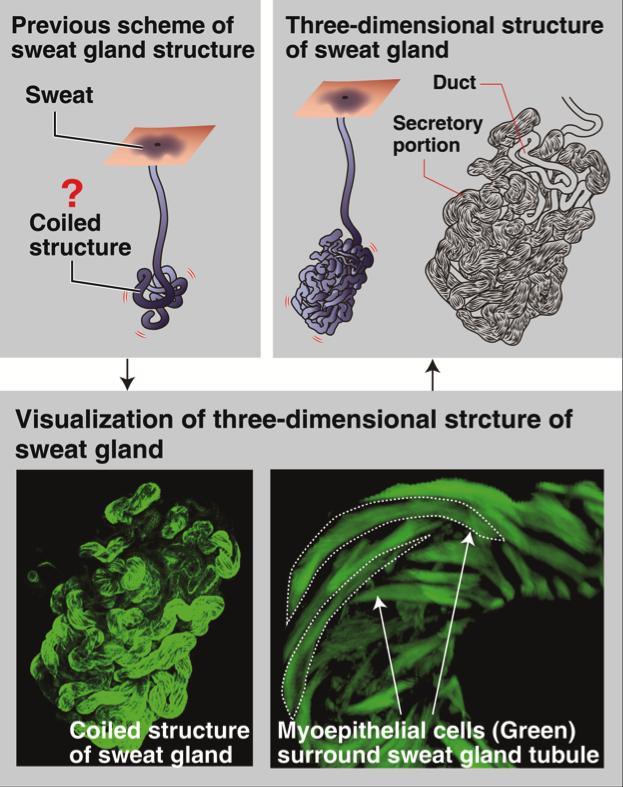
Credit: Osaka University
Osaka, Japan – The basic structure of human sweat glands consists of a coiled secretory region deep in the skin and then a tube or duct that conveys the sweat to a pore at the skin surface. However, it has been difficult to obtain more detailed structural insights due to technical limitations and the structural complexity of these glands.
In a major breakthrough that boosts our understanding of how we sweat, a team at Osaka University has applied a recently developed technique called whole-mount immunostaining to study sweat glands, revealing their structure down to the single-cell level and thus shedding light on the functions of their different components. The obtained findings should lead to treatments for disorders of the perspiratory system.
Conventional approaches for studying structural features of tissues involve cutting blocks of tissue into thin sections, and then viewing these sections after applying certain stains or dyes to resolve the features. Although these sections can then be reconstructed in a series to approximate the 3D arrangement of the tissue, this has a drawback in that the sectioning and preparation procedures can disrupt minute structural features. As reported in the journal PLOS One, the Osaka University team has now overcome these issues by applying whole-mount immunostaining to sweat glands after removing adjacent connective tissue in the skin, enabling anatomic features to be observed in a completely intact state.
"Whole-mount immunostaining allows us to view the sweat gland structures seamlessly, without interruptions for sectioning, which is very important given that part of the gland has tubes that are entangled with each other in a very complicated way," Kiyotoshi Sekiguchi says. "We revealed the different cross-sectional shapes of these tubes and the cells that they're made of."
The team's findings reveal the importance of cells called myoepithelial cells working in unison to induce contraction of the secretory part of sweat glands to convey sweat to the exterior. The results also show how nerves and blood vessels interact with the various components of sweat glands, providing hints about how regulation of sweating could go awry.
"This knowledge about sweat gland structure and function could have many clinical applications, and even lead to strategies for treating heatstroke," Ryuichiro Kurata adds. "Because of the high-resolution findings that our approach provides, we can even determine the density of nerve fibers in sweat glands, helping to diagnose specific sweating-related disorders and to select appropriate treatments."
###
Media Contact
Saori Obayashi
[email protected]
81-661-055-886
@osaka_univ_e
http://www.osaka-u.ac.jp/en
Original Source
http://journals.plos.org/plosone/article?id=10.1371/journal.pone.0178709 http://dx.doi.org/10.1371/journal.pone.0178709





